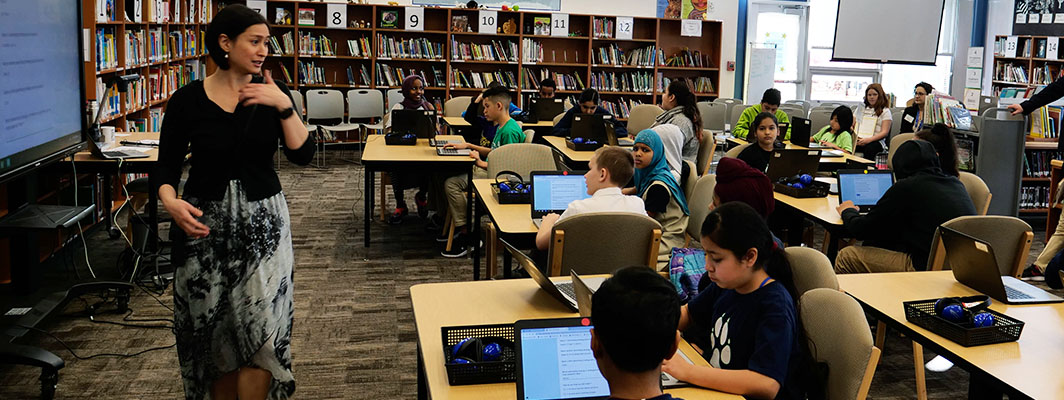
May 22, 2019 | By Jonathan Piper II
In my public high school, we rarely interact with technology, at least not productively. If you walk into a classroom at my school, you’ll probably see students scrolling through Instagram and recording videos on Snapchat. You probably won’t see many of us using technology to find creative ways to communicate and express our ideas to diverse audiences or to research new ways to fix our planet, like you might see at other schools.
As students, we expect the content of our classes to be entertaining. If we could use technology more powerfully, we could have access to a whole new world at our fingertips. But at my school, we still aren’t using it to create more engaging classes, let alone to make positive impacts on our society. This lost opportunity to engage and excite us about learning makes you wonder: Why do only some students get these opportunities in the first place?
There are major barriers preventing schools like mine from providing all students with a powerful, tech-infused education:
The reason we don’t use technology to the best of its ability is probably due to the lack of technological infrastructure, and because students and teachers at my school don’t see examples of how to fully engage technology in class to learn in new ways. The only times I’ve been asked to use technology in class have been to type essays in English or to do research for history projects. However, technology can be used for so much more. So, why is tech use so limited at my school?
The lack of technology use in my classrooms is a shame considering I am in Oakland, one of the most innovative cities with an influx of tech companies. With all of this money and technology coming into my city, how does the lack of tech resources in the public schools remain the same?
In my school, many students don’t know what edtech is, let alone have access to the resources edtech could provide. The only devices I can access are the two Chromebook carts my computer academy pathway—a cohort of students pursuing careers in computer science and technology—shares, and the projectors that some teachers use in their classrooms. You’d think by being in the computer academy pathway, which is designed for students exploring the computer science field, we would be using technology throughout the day to create, communicate, and deeply engage with information. But that’s not the case.
Another huge setback for students without access to devices is the requirement to check out textbooks from the school library. The textbooks in our public schools are extremely outdated, uncomfortably heavy to lug around, and students get fined whenever they are damaged or misplaced. If we utilized technology more for learning, we would be more responsible with our devices and access up-to-date materials.
By dividing access to devices depending on the pathway students choose, only students in specific pathways use technology for their class assignments at all—though none of us use it in the ways I would like to see. So how do we push past these barriers?
If I could effectively integrate edtech into schools, I would first identify where edtech products could enhance or transform my education. Next, I’d try to identify which products would meet my needs and how to access them. Once students, teachers, and school leaders understand what is possible when we use edtech and how to access the right products, we could completely transform the educational experiences of all students, regardless of a community’s socioeconomic status.
Explore the Edtech Marketplace Today blog series to hear other voices from the field share important perspectives on challenges and strategies to improve the edtech market. You can also visit the Edtech Pilot Framework to learn more about the edtech marketplace and subscribe to Digital Promise’s Action Report to stay up-to-date on their work.
By Jackie Gantzer and Jin-Soo Huh